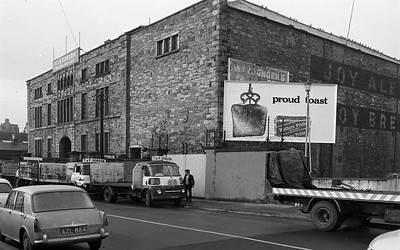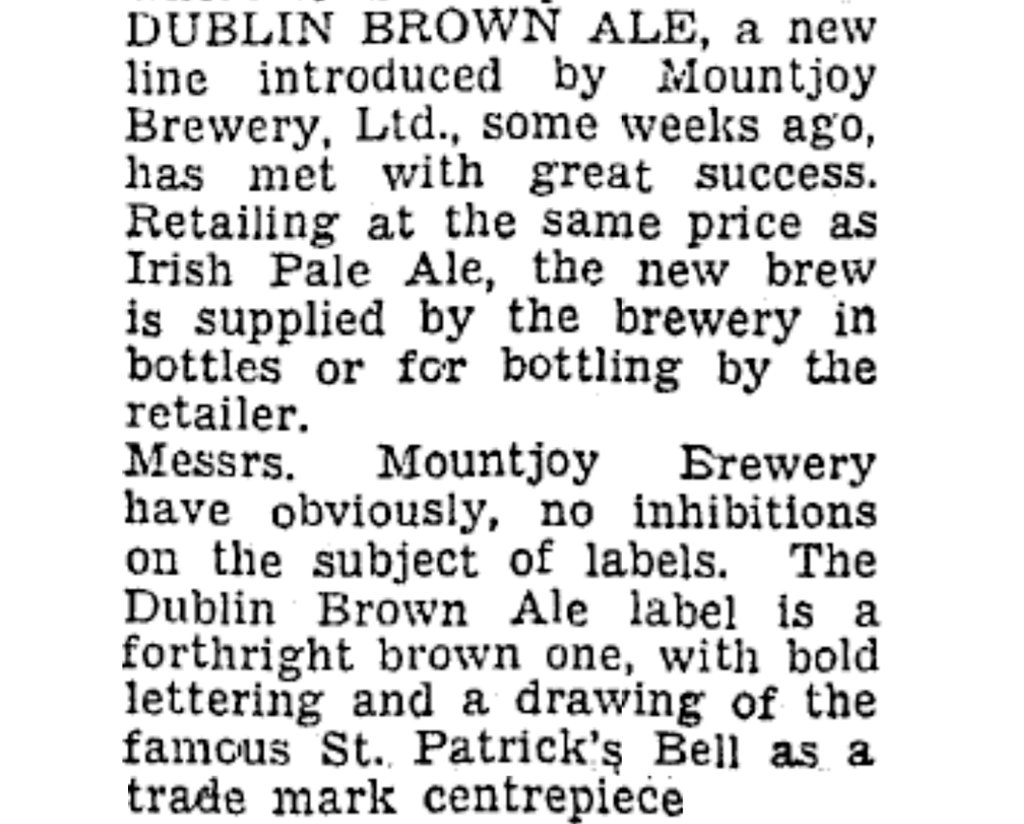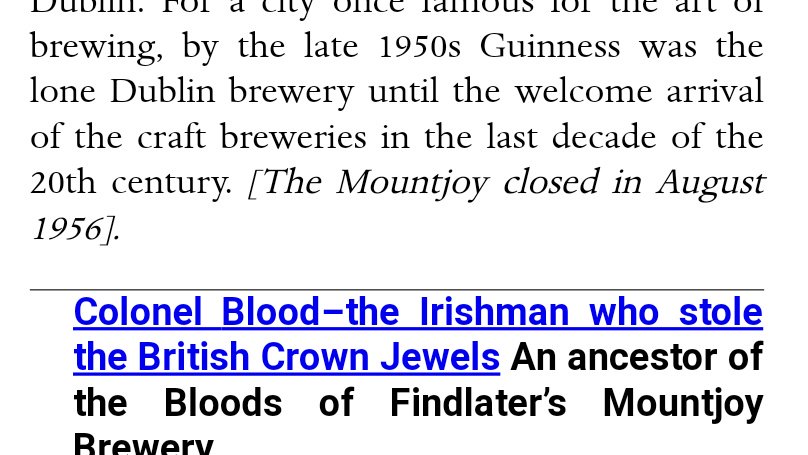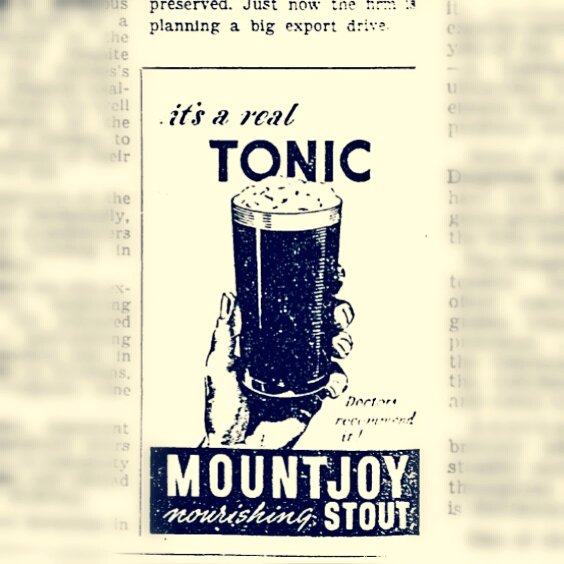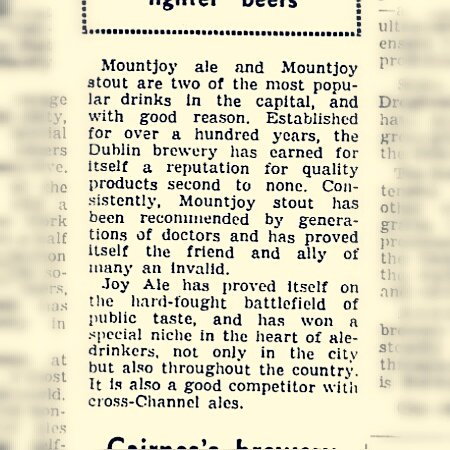In late January of 1888 some post from the Mountjoy Brewery in Dublin arrived on the premises of James Watford who had a wine and spirits stores at number 76 on the High Street in Bedford in England. The bespoke postcard wasn’t anything special or unusual, and was something that the Mountjoy Brewery probably posted in reasonably large quantities every month, being just another part of the accounting, notification and checks that were carried out by all breweries in this era.
The prepaid halfpenny postcard was dated and posted on the 19th of January 1888 and on the back was printed the following message:
Messrs. FINDLATER & CO., Have to this date received the undermentioned Casks, and placed the same to the credit of your account.
There follows a list of cask sizes from Hogsheads (54 Imperial gallons) down to Firkins (9 Imperial gallons) and it is beside this last size that the number 5 is written and below that a list of the reference numbers of those casks and the words ‘ad[d]ressed 23/11/87 + 28/12/87.’ Additionally there is a diagonal stamp across all of this bearing the words ‘FINDLATER’S MOUNTJOY BREWERY Co., LIMITED.’
Mountjoy brewery was founded in Dublin in 1852 by a group of Irish and British businessmen and was one of the largest stout exporters in the city - and country - in the late 19th and into the early 20th century. It was a part of the large Findlater mercantile empire that was well known in the food and drink industry in general. In the late 19th century Mountjoy Brewery only brewed porters and stouts according to Barnard’s description of the brewery, and it appears from advertisements in British papers at this time that they were sending Extra XXX Stout, Extra XX Stout and X Stout in that direction and their brewings widely available in many towns. One of the most popular products was called ‘Nourishing Stout,’ which was also marketed as Crown Stout.1
We will never be sure exactly which stout - or stouts - were being sent to Watford’s but it was likely to have included that Nourishing Stout, as that was extremely popular at this time and for decades after. Indeed back in 1871 Findlater, Mackie & Co. a bottling and drink company based in England and connected to the Dublin firm were sued by Messrs. Ragget for using the term ‘Nourishing Stout’ on their beer. The case was dismissed as the word ‘nourishing’ was not seen as a trademark infringement, just a descriptor. It came out during the hearing that Ragget’s were not brewing the stout themselves, they were sourcing it from Truman’s brewery in London and bottling it under their own label, and it was reported that this was also where Findlater, Mackie & Co. were sourcing theirs!2 Why they weren’t using a Dublin brewed version of a ‘nourishing’ stout from their related brewery - if that report is correct - is a mystery, as Mountjoy were exporting to England at this time, but may have just come down to logistics and convenience, or perhaps some other internal issue. It also emerged that Raggets had already stopped a ‘Nourishing Dublin Stout’ from being sold under that description, and newspaper records show there was one being sold in 1869 with no brewery mentioned and one also being sold in 1872 brewed by Jameson, Pim & Co.3
But back to our casks and what is perhaps also of interest is that Mountjoy Brewery claimed in the 1860s to be the ‘only Dublin brewers who send out all sizes of casks in English measure.’4 How true this claim is might be difficult to verify but it was certainly true that many Irish breweries were using Irish cask sizes up until at least the turn of the century, and some even longer. An Irish barrel was 40 Irish gallons which was roughly the equivalent of 32 gallons whereas an Imperial ‘English’ barrel was 36 gallons.
What is clear is that there were many casks, regardless of their size, going back and forth across the Irish Sea in the latter part of the 19th century and there was a great deal of logistical work needed to document, trace and return these casks to their rightful owners. This postcard is a literal snapshot of that process and the communication that was needed for tracking individual casks, which would have been recorded on the delivery dockets and invoices sent out by the brewery at the time of dispatch.
To give an idea of the volumes involved the total exports of porter from Dublin in 1888 amounted to the equivalent of 424,205 hogsheads.5 Much of this was probably shipped in some smaller sized casks like Mountjoy’s firkins, so the total number of items shipped may have amounted to close to a million perhaps, of which not all would have returned of course. Even still, this is a huge amount of paperwork and organisation, a side of brewing that can be forgotten about compared to the actual ‘glamour’ of the brewing process itself.
Incidentally in 1888 the Mountjoy Brewery were only sending out the equivalent of 11,595 hogsheads, 6th on the list behind D’arcys, Phoenix, Jameson and Watkins, with Guinness topping the list naturally with 330,088 hogsheads by volume. Although it is worth noting that Mounjoy were in a slump in sales at this time compared to the decades before and afterward where they came second on the list at times.
And these casks would also need sniffing, sorting, cleaning, repairing, stacking and host of other jobs performed on them before they were filled and sent out, and the whole process of recording and retrieving would start yet again. A small glimpse at where some of this took place is mentioned by Alfred Barnard in the opening quotation.
Simple, fragile and ephemeral objects like this brewery postcard are important reminders of our brewing heritage, giving us a glimpse into our past, although admittedly not a very exciting one perhaps.
But because this object exists and was kept and passed on through numerous hands it became a tangible record of what a huge brewing city Dublin was in the 1880s, and that Irish brewing history exists beyond those breweries whose beers and history survived.
Liam K
1 Warrington Examiner 18th September 1875 and Leicester Daily Post 6th June 1889
2 The Law Reports : Equity Cases Including Bankruptcy Cases, Before the Master of Rolls, the Vice-chancellors, and the Chief Judge in Bankruptcy · Volume 17 1874 - Editor: George Wirgman Hemming
3 The Shrewsbury Chronicle 29th November 1872
4 The Birmingham Daily Gazette 19th May 1868
5 The Railway News, Finance and Joint-stock Companies' Journal 1889
More information on the Mountjoy brewery can be found in Findlaters: The Story of a Dublin Merchant Family by Alex Findlater





